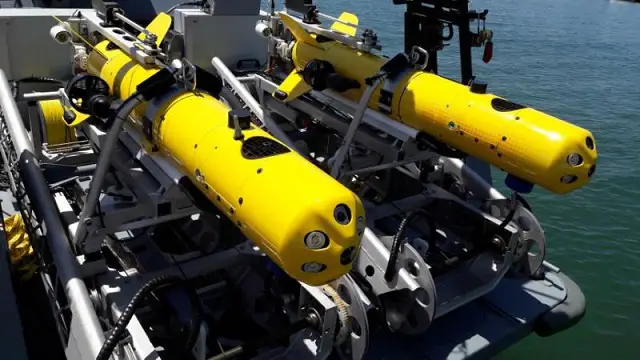Breaking news
ECA Group tests multi-simultaneous MCM drone operation with the Belgian Navy.
| 2017
|
|
|||
|
Video on ECA Group's AUVs, USV and ROVs during Belgian Navy evaluation of Unmanned Maritime Systems 2017
|
|||
|
This complete set of vehicles was deployed within an evaluation area for a predefined MCM mission. Through its radio and acoustic communication links, ECA was able to demonstrate its capability to operate in parallel, with real-time cooperative actions, a large number of unmanned vehicles including AUV, USV whilst maintaining operators aboard the CPV in a safe zone several kilometers outside of the mine field. After only a few minutes the first contact snapshots automatically generated by the Automatic Target Detection software embarked in the AUV A9-M relayed by the USV were received on the CPV and the classification process could immediately start whilst the AUV continued its survey mission following a subsea preprogrammed pattern.
The USV INSPECTOR was immediately sent to the location of the shortlisted classified contacts worth of interest in order to deploy the SEASCAN inspection vehicle. This ROV was remotely operated using the subsea optical fiber from the USV and the latter’s radio link to the operator aboard the CPV in order to carry out the final visual camera identification. All the collected data from this operation is to be examined by the Belgian Navy in order to evaluate the performances of the ECA unmanned MCM integrated system. This mission allowed ECA to gain valuable experience in real operational conditions and was a great opportunity for the Belgian Navy to test the latest operational MCM concepts which are now becoming reality. |
|||





























 INSPECTOR USV with Seacans onboard. ECA picture.
INSPECTOR USV with Seacans onboard. ECA picture.